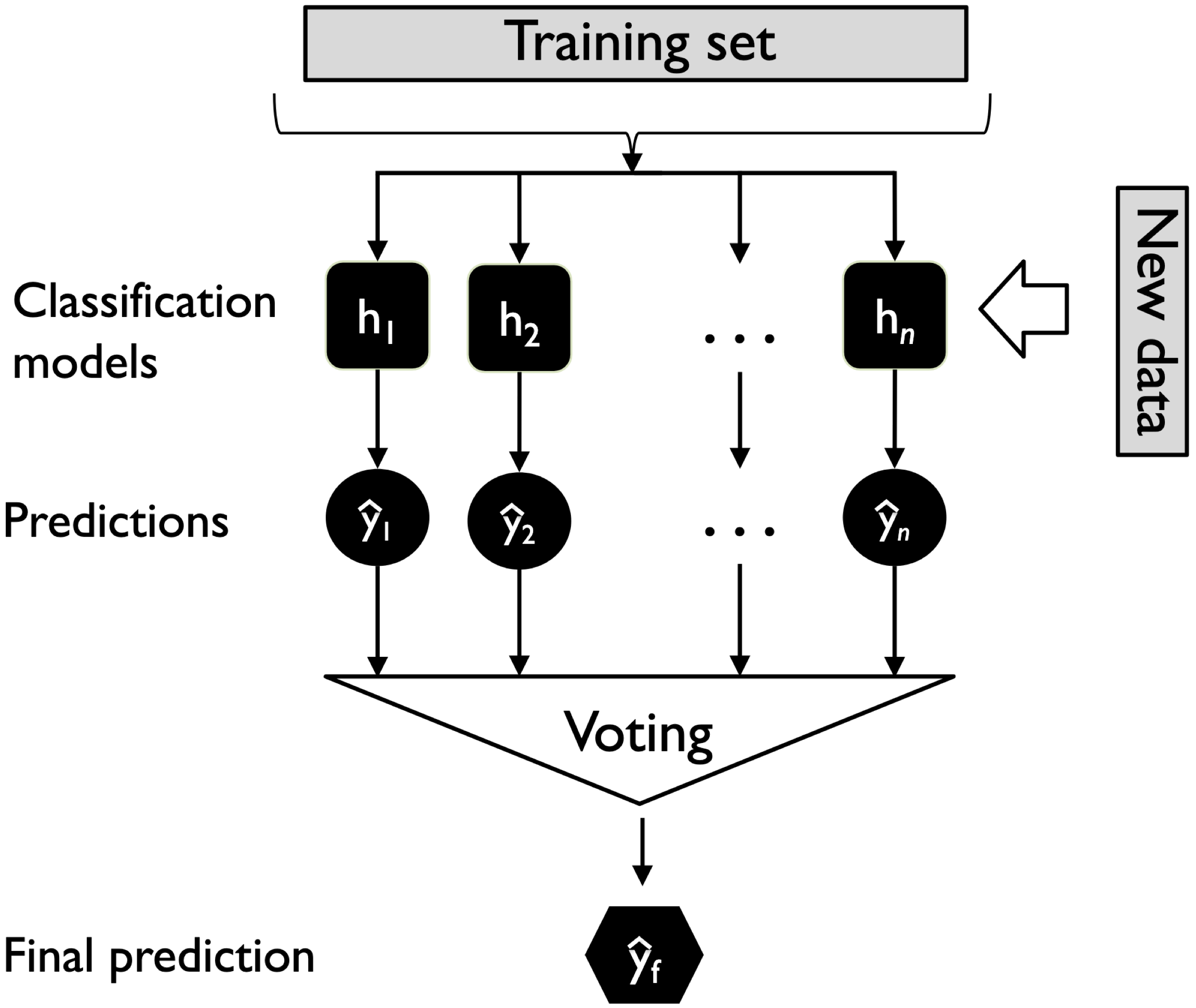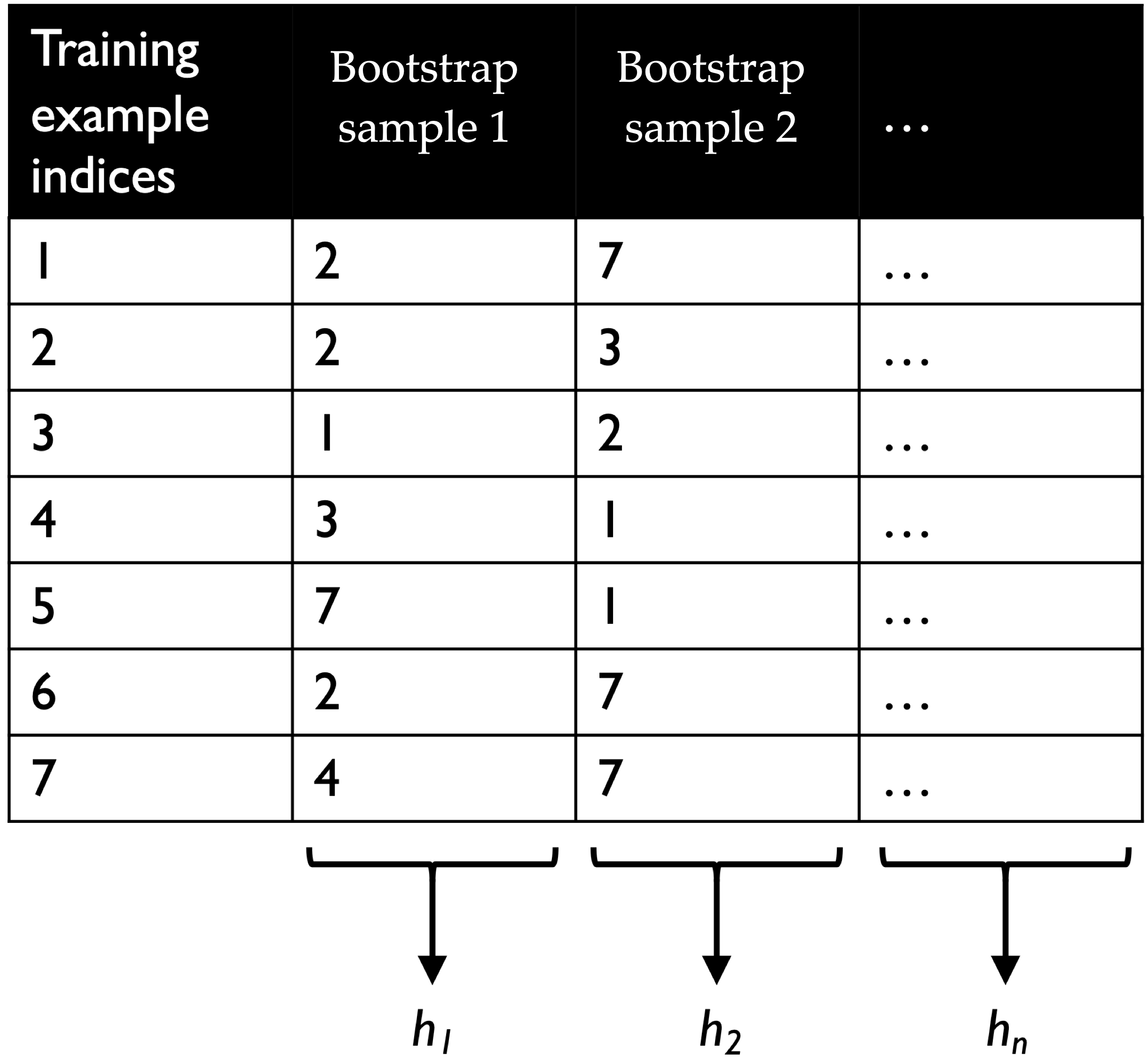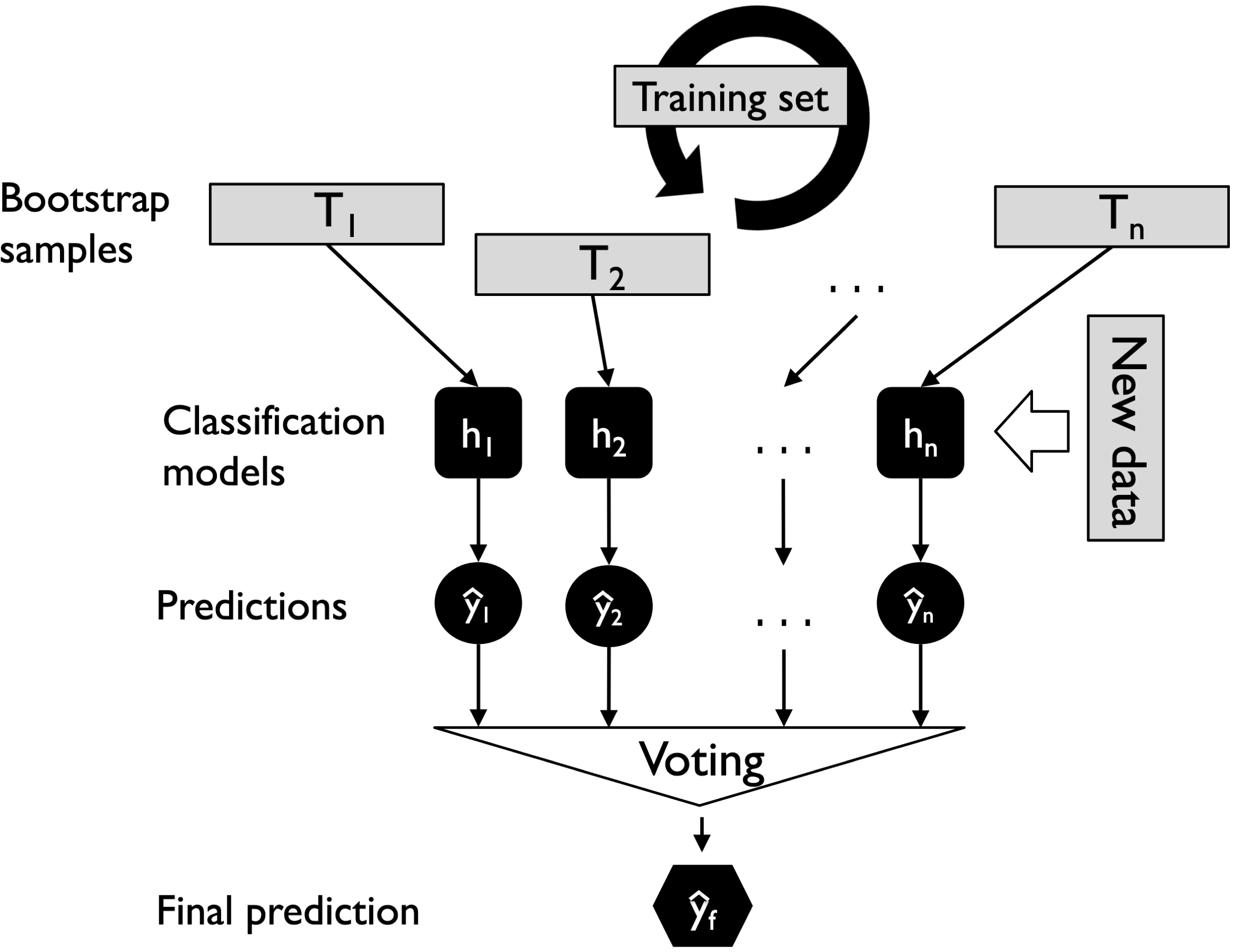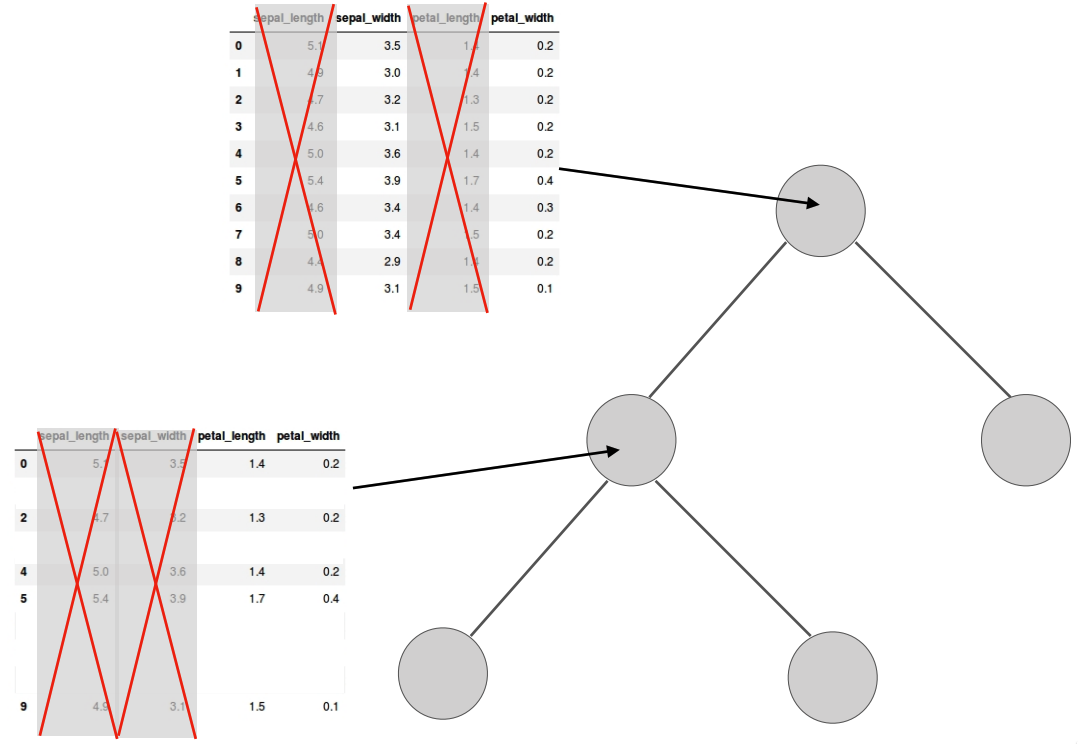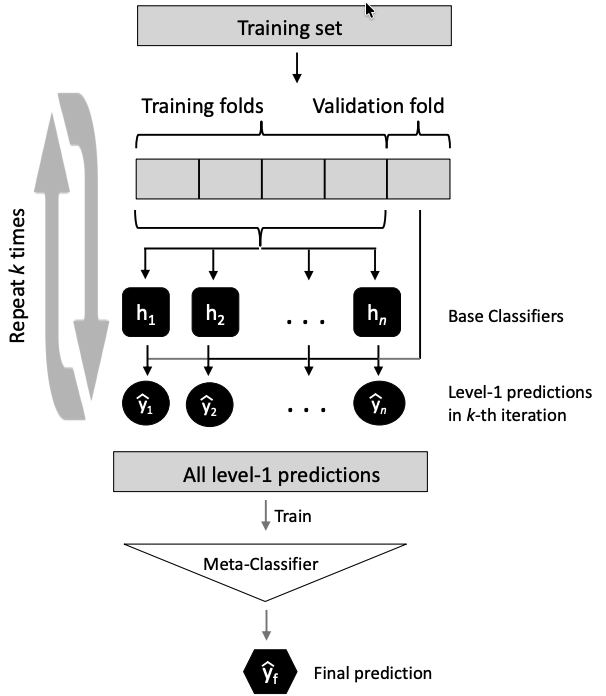CPSC 330 Lecture 11: Ensembles
Focus on the breath!

Announcements
- Midterm 1 window starts tomorrow!!
- Midterm OH: Tuesday, Oct 14th 2pm to 3pm ORCH 4018
- During midterm:
- Piazza will be turned off.
- No tutorials and office hours.
iClicker Exercise 11.0
Which of the following scenarios has worked effectively for you in the past?
- Working independently on a project/assignment.
- Working with like-minded people.
- Teaming up with a diverse group offering varied perspectives and skills.
The Wisdom of Crowds
Groups can often make better decisions than individuals, especially when group members are diverse enough.
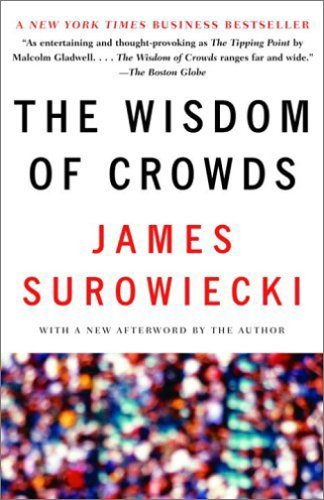
Ensembles key idea
- Combine predictions from multiple models for a more accurate and stable result
- Classification: either take majority class or average predicted probabilities
- Regression: Average (mean or median) predictions
- Averaging reduces individual model errors, making the ensemble more robust than any single model
Ensembles
- Ensemble methods are widely used in industry and dominate machine learning competitions (e.g., Kaggle).
- In this course, we’ll explore
- Tree-based ensembles:
- Random Forests
- Gradient Boosted Trees (at a high level)
- Random Forests
- Ways to combine models:
- Averaging: combine model outputs directly
- Stacking: use one model to learn how to combine others
- Averaging: combine model outputs directly
When do ensembles help?
In which of these scenarios does an ensemble improve performance?
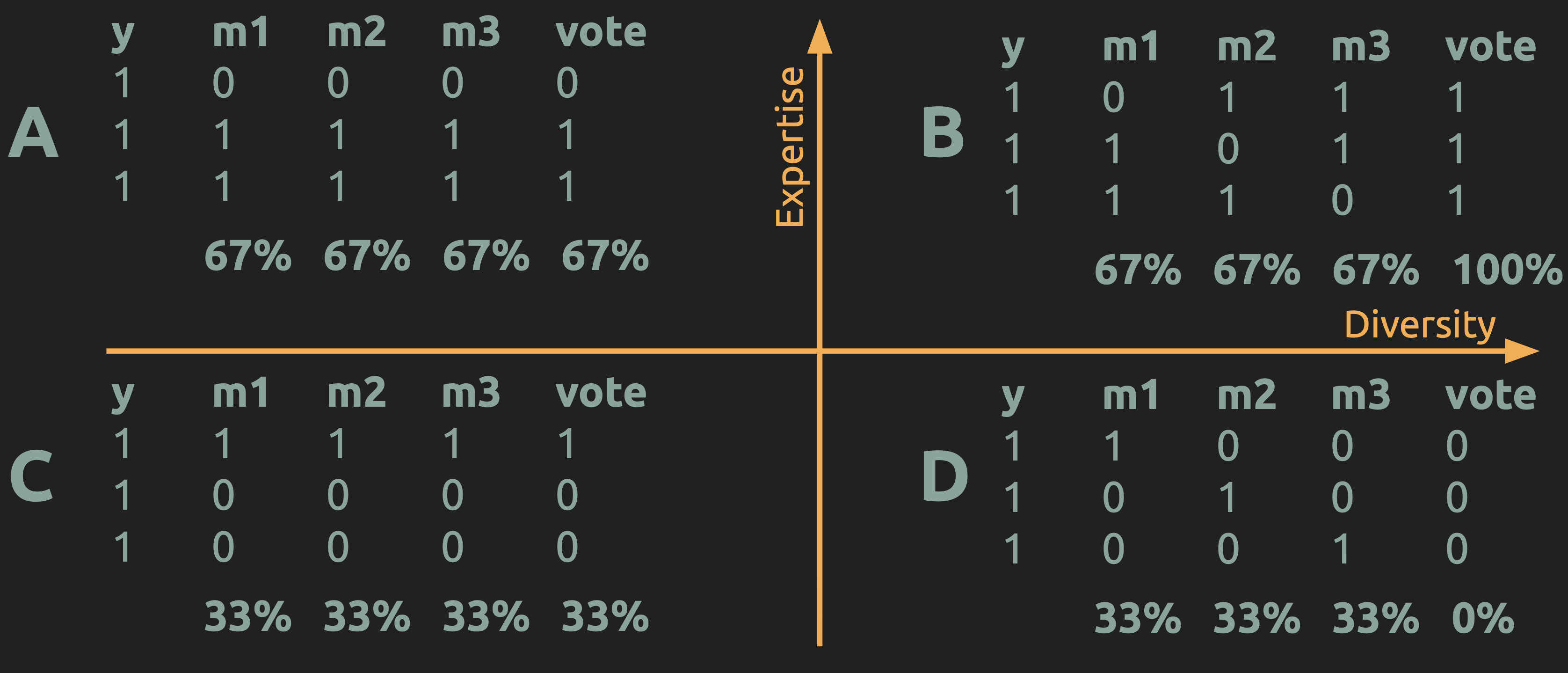
When do ensembles help?
Ensembles improve performance when the individual models are both competent (have expertise) and make different kinds of errors (are diverse).
Diversity
- Ensembles work best when their models make different types of mistakes.
- If all models make the same errors, averaging won’t help.
- We can encourage diversity by:
- Introducing randomness (e.g., bootstrapped samples and random feature subsets (Random Forests))
- Sequentially focusing on previous errors (e.g., Gradient Boosting)
Expertise
- Diversity alone is not enough. Individual models should still have some predictive skill.
- If each model performs poorly (worse than random), the ensemble can’t recover.
- Best ensembles strike a balance between:
- Diversity: models disagree in useful ways
- Expertise: each model performs better than chance
- Diversity: models disagree in useful ways
Random forest
What can we randomize between trees?
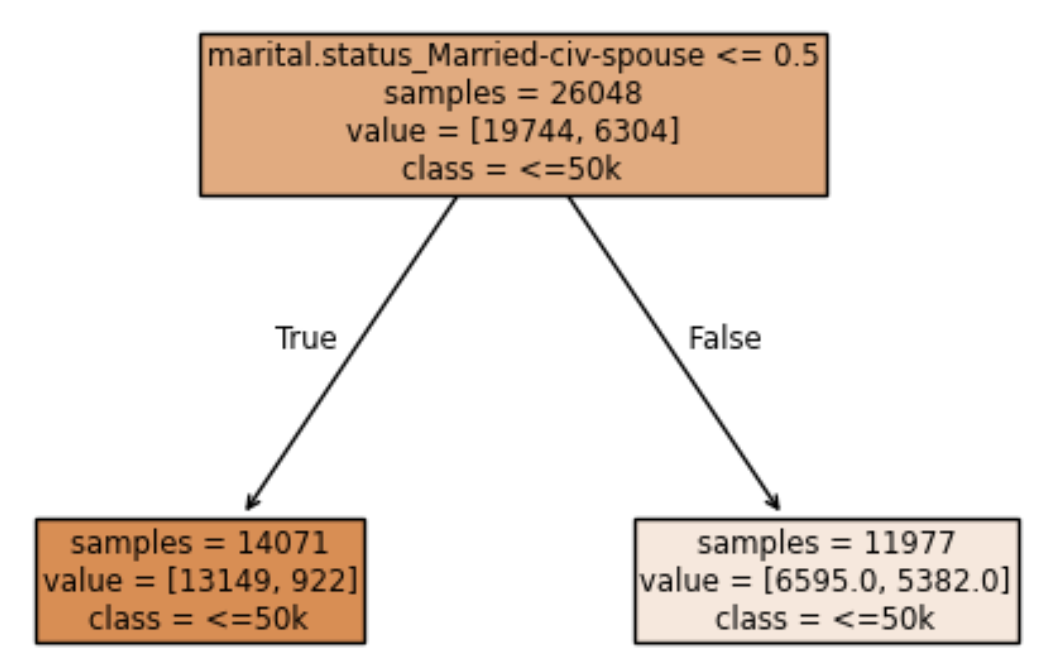
Two sources of randomness in random forests
- Bootstrap sampling of data
Each tree is trained on a slightly different dataset → decorrelates trees. - Random subset of features at each split
Each split considers only a random subset of features → further reduces correlation.
Bootstrap sample
- Ensures trees see different versions of the data
- Creates diversity while preserving similar overall structure
Random subset of features at each split
- Select a different subset of features at every split
- Each tree now explores different parts of the feature space
- 🤔 But why not pick one subset per tree instead?
Why use a new subset at each split?
| Strategy | Diversity | Expertise | Issue |
|---|---|---|---|
| One subset per tree | Very high | Often low | May miss important features |
| New subset per split | Moderate | High | Stronger, less correlated trees |
- Using a new subset per split strikes a balance between diversity and strength
- Prevents trees from becoming too weak while still keeping them different
“Random selection of features at each node gives substantial additional accuracy gains over bagging alone.”
— Breiman (2001)
Interim summary
- Random Forests reduce overfitting by decorrelating trees
- Two ingredients make this happen: Random data (bootstrapping) and random features (per split)
- Together, they build a strong yet diverse ensemble
iClicker Exercise 11.1
Select the most accurate option below.
- Every tree in a random forest uses a different bootstrap sample of the training set.
- To train a tree in a random forest, we first randomly select a subset of features. The tree is then restricted to only using those features.
- The
n_estimatorshyperparameter of random forests should be tuned to get a better performance on the validation or test data.
- The
- In random forests we build trees in a sequential fashion, where the current tree is dependent upon the previous tree.
- In random forests we build trees in a sequential fashion, where the current tree is dependent upon the previous tree.
- Let classifiers A, B, and C have training errors of 10%, 20%, and 30%, respectively. Then, the best possible training error from averaging A, B and C is 10%.
Gradient boosting (high level)
From random forests to boosting
- In random forests, we build trees independently and average their predictions
- reduces overfitting by combining diverse models
- reduces overfitting by combining diverse models
- In boosting, we build trees sequentially
- each new tree learns from the mistakes of the previous ones
- reduces underfitting by making the model smarter over time
- each new tree learns from the mistakes of the previous ones
Why it works
- Sequential correction: each tree improves on what’s left of the error
- Bias reduction: starts simple and adds complexity gradually
- Controlled learning: small trees and a learning rate prevent overfitting
Most commonly used boosting models
- XGBoost: extremely optimized and widely adopted in industry
- LightGBM: faster training with large datasets
- CatBoost: handles categorical features efficiently
“More recently, gradient boosting machines (GBMs) have become a Swiss army knife in many a Kaggler’s toolbelt.”
— Sebastian Raschka, Joshua Patterson, & Corey Nolet (2020)
Averaging and Stacking
Goal: Combining diverse models for better generalization
Averaging (Voting)
- Combines predictions from multiple base models
- Works for both classification and regression
- Improves stability and performance by averaging over models
- Random forest is a type of averaging classifier
Types of Voting
Hard Voting
- Each model votes for a class label
- Final prediction = majority vote
Soft Voting
- Averages the predicted probabilities from each model
- Final prediction = class with highest average probability
- Usually performs better
Stacking
- Goes one step beyond averaging
- Instead of simple averaging, trains a meta-model to learn how to best combine base models’ predictions
How stacking works
- Train several base models on the training data
- Collect their predictions on a validation set
- Train a meta-model on those predictions to learn the optimal combination
- Final prediction = output of the meta-model
Stacking
Ensembles class demo

